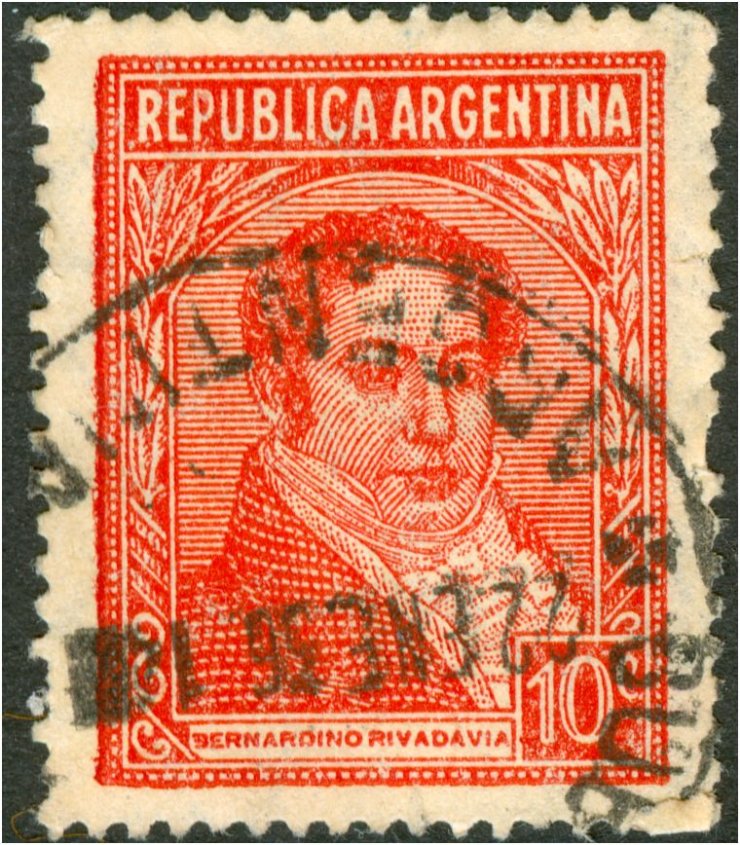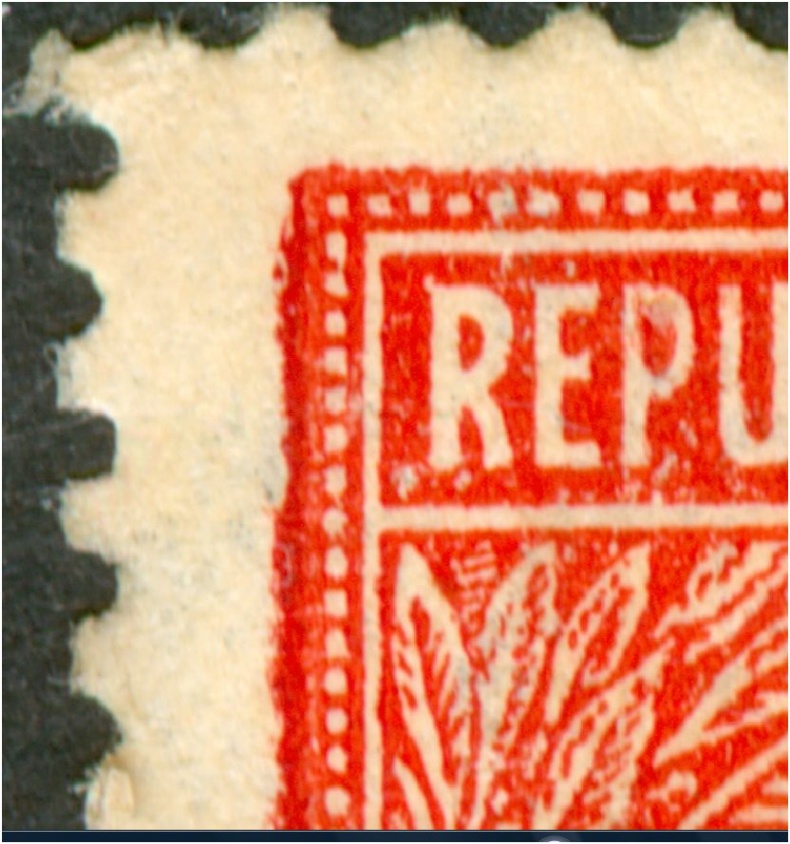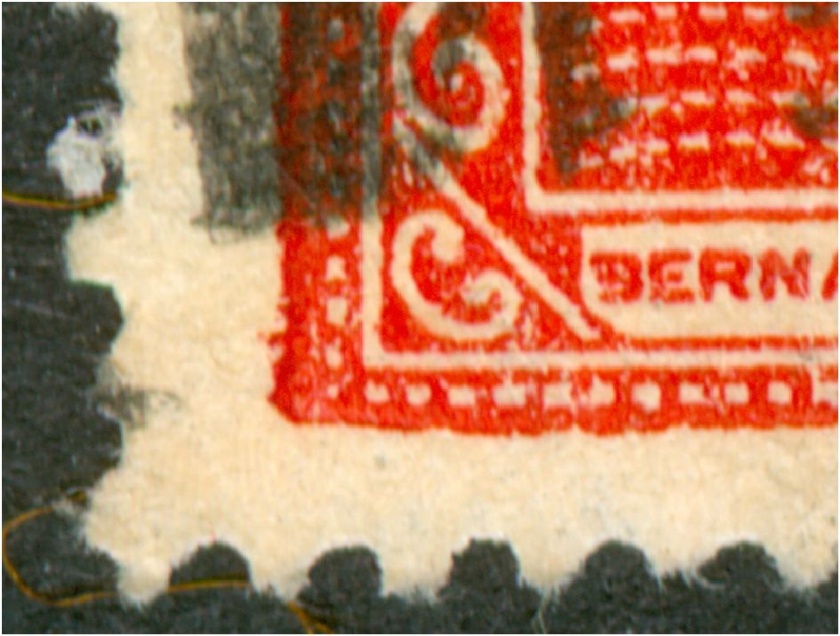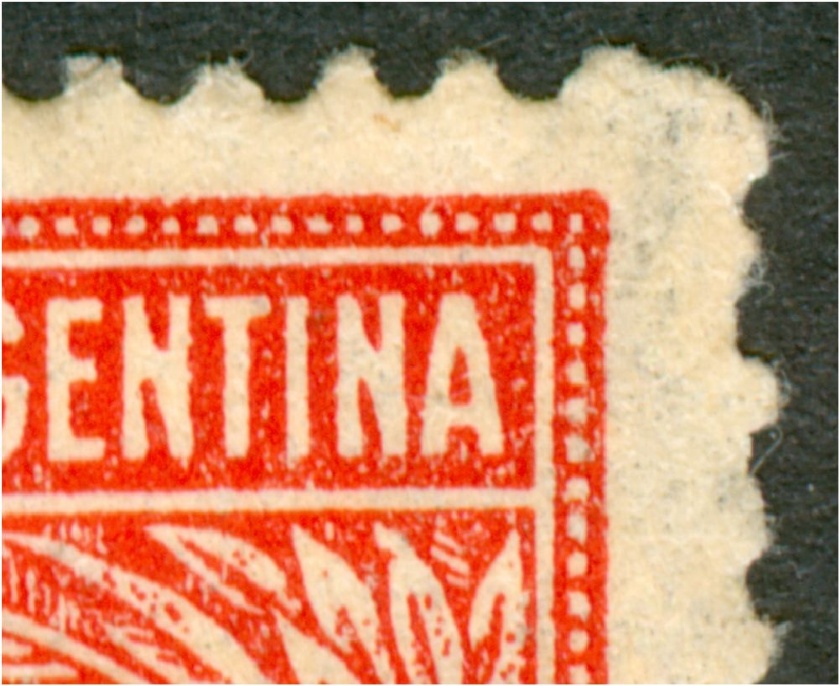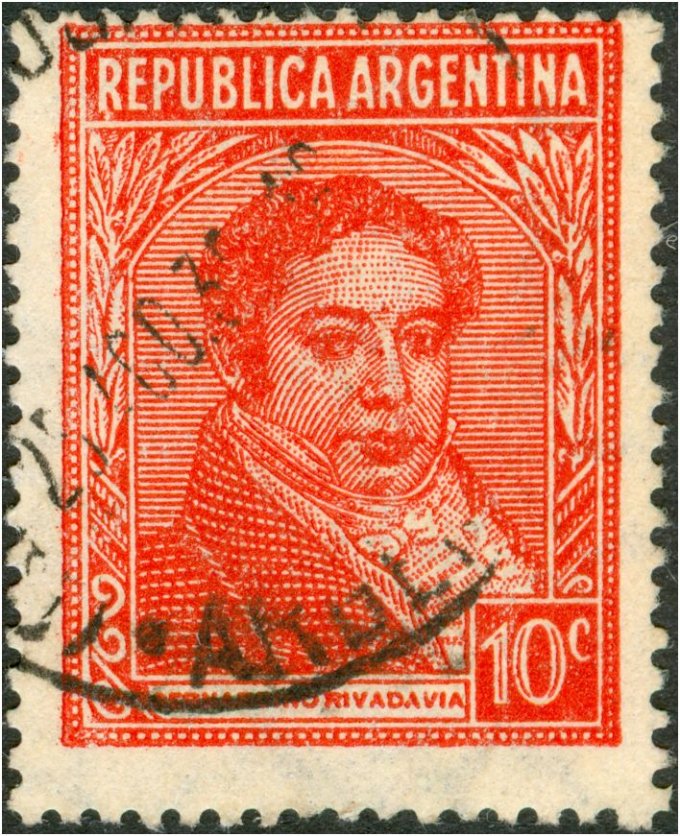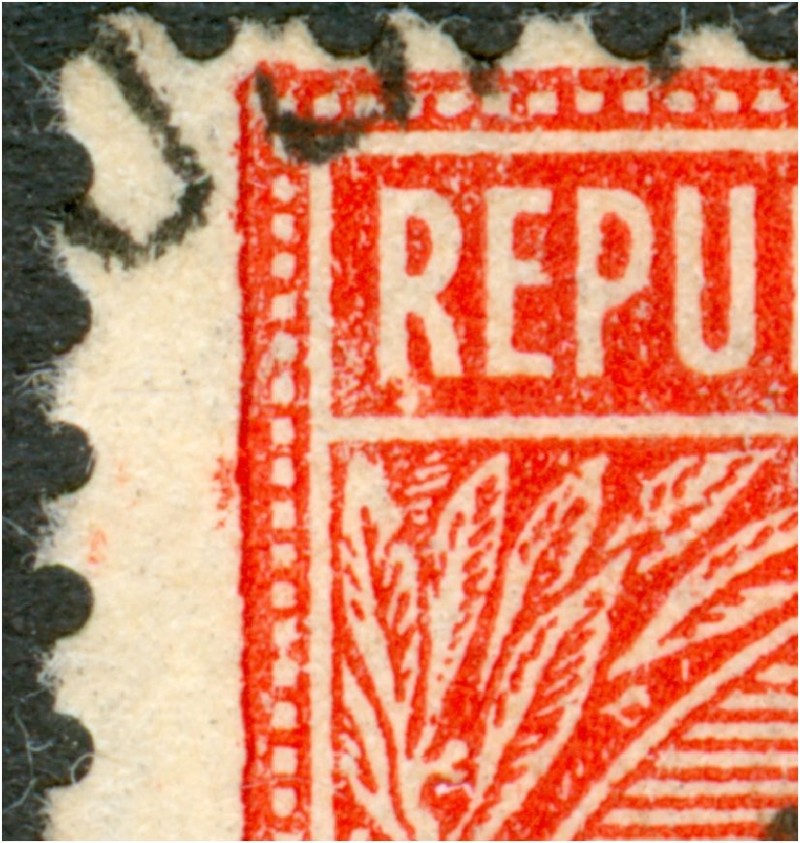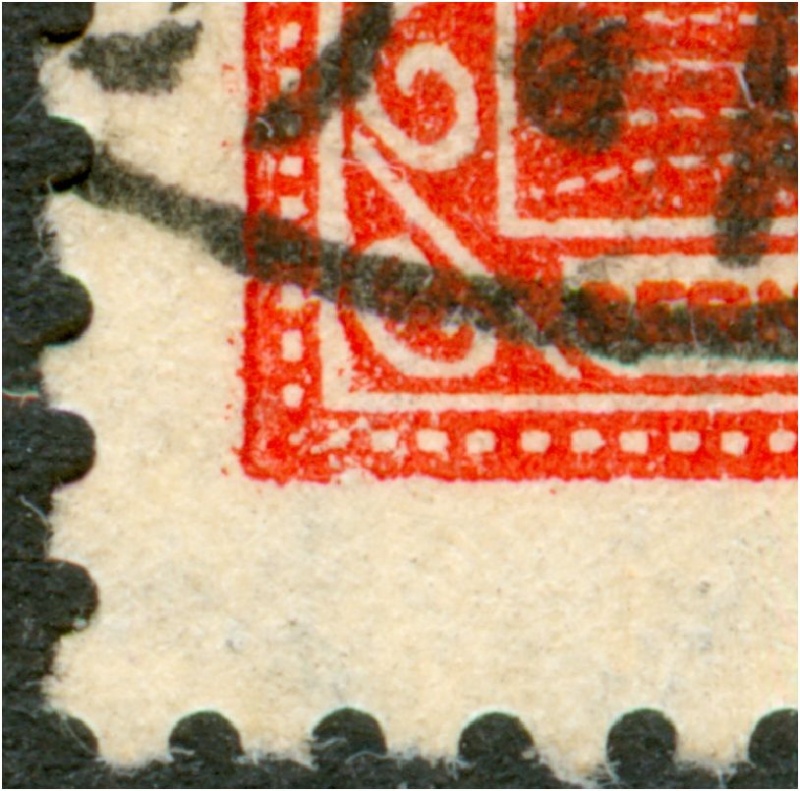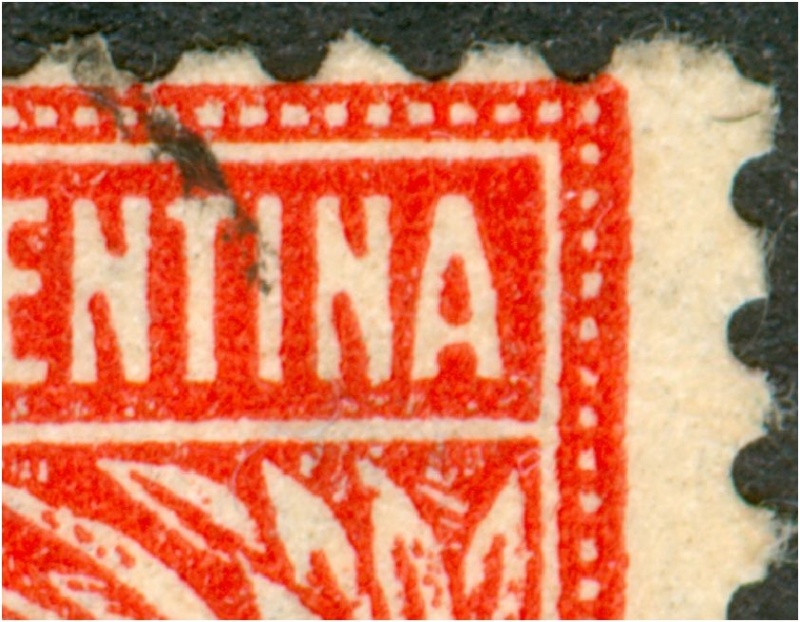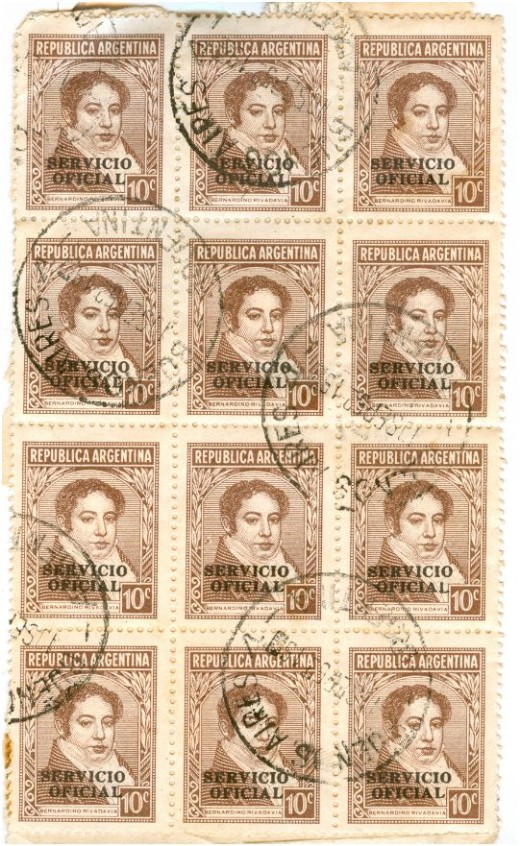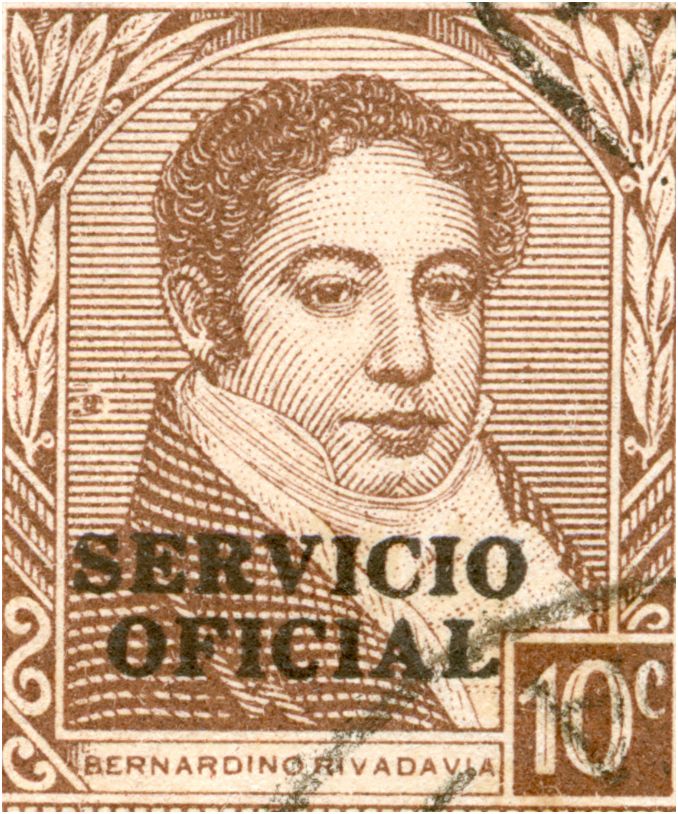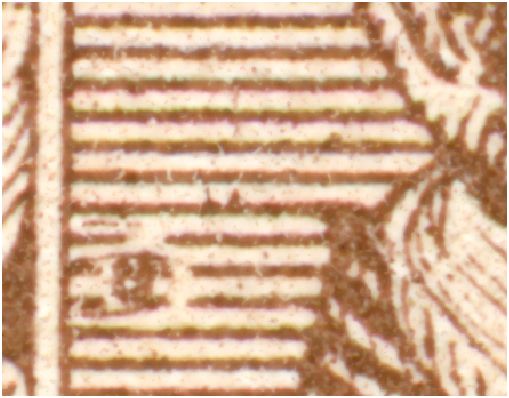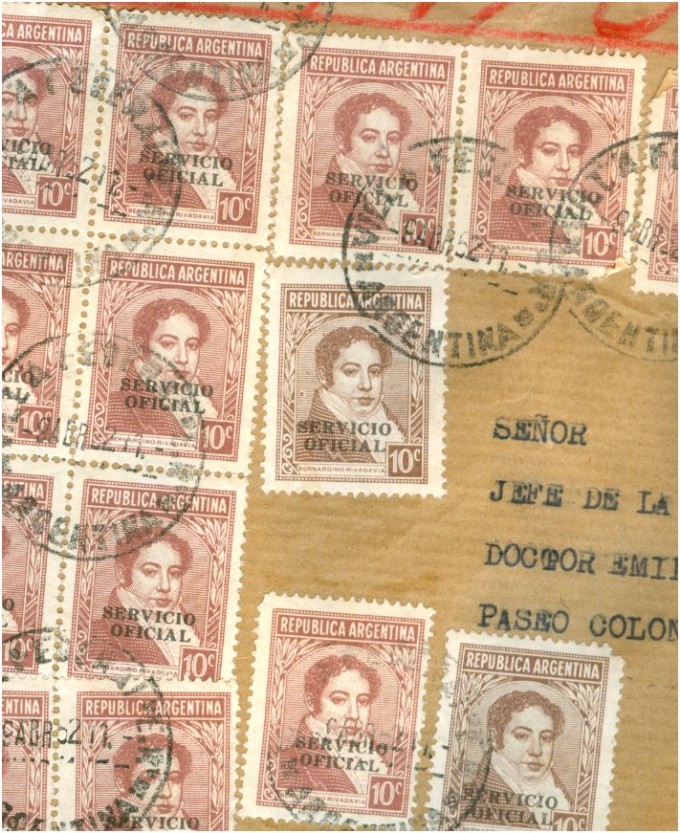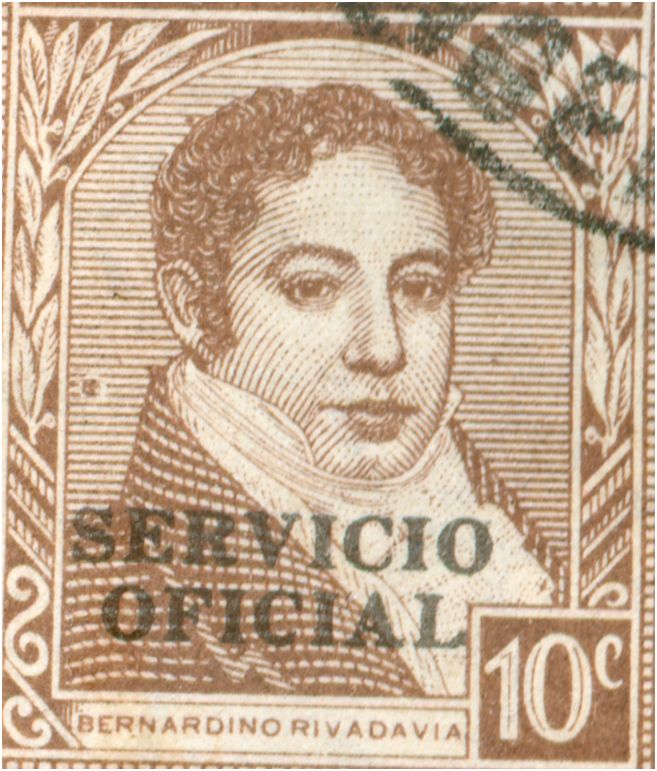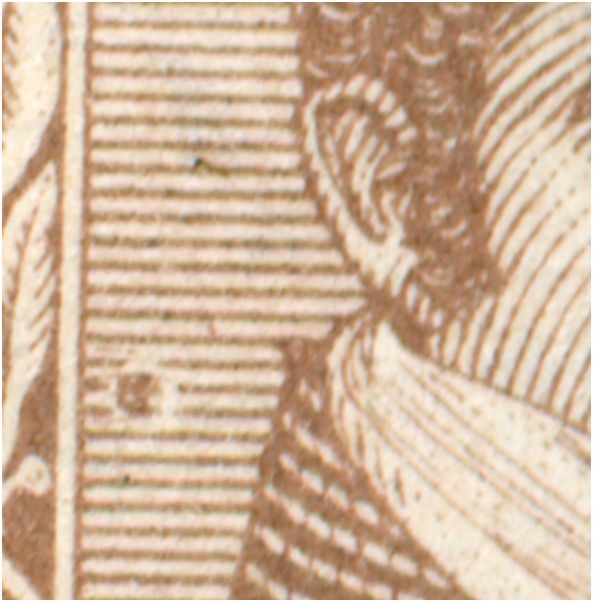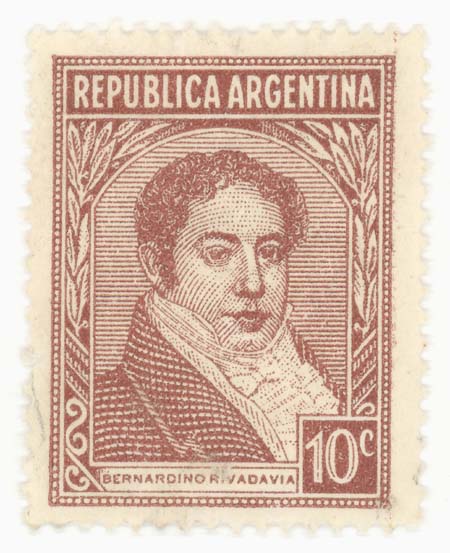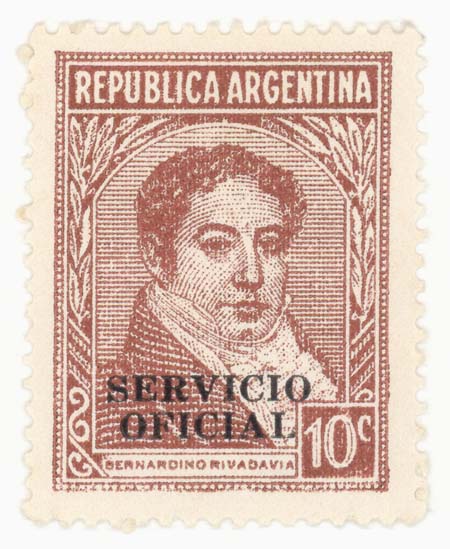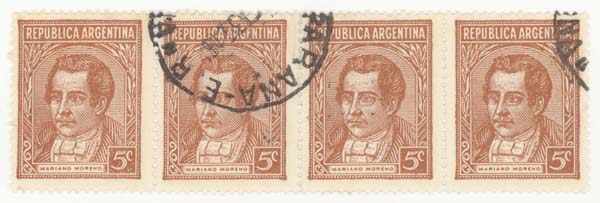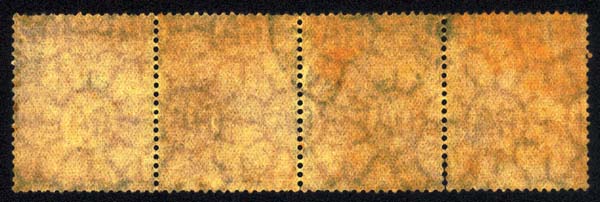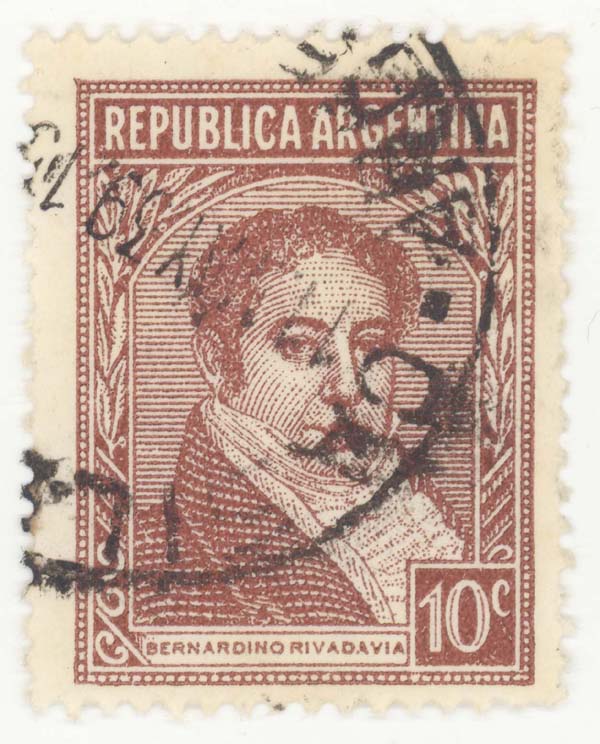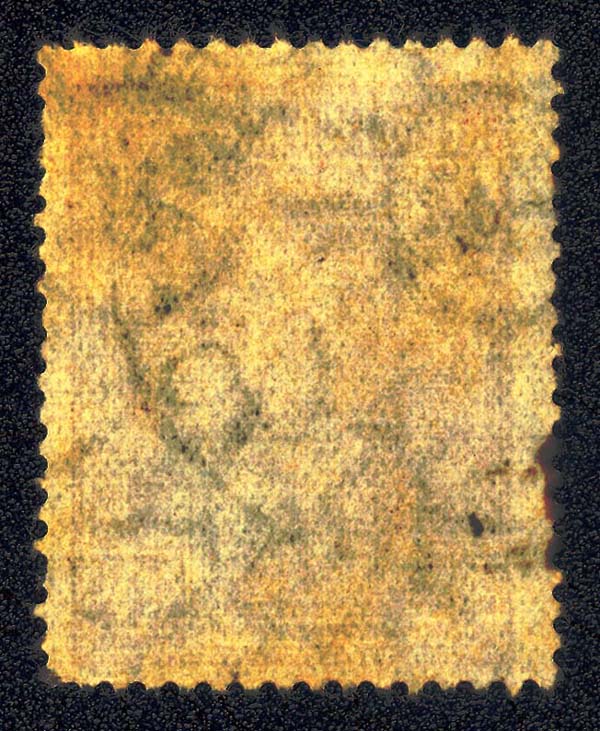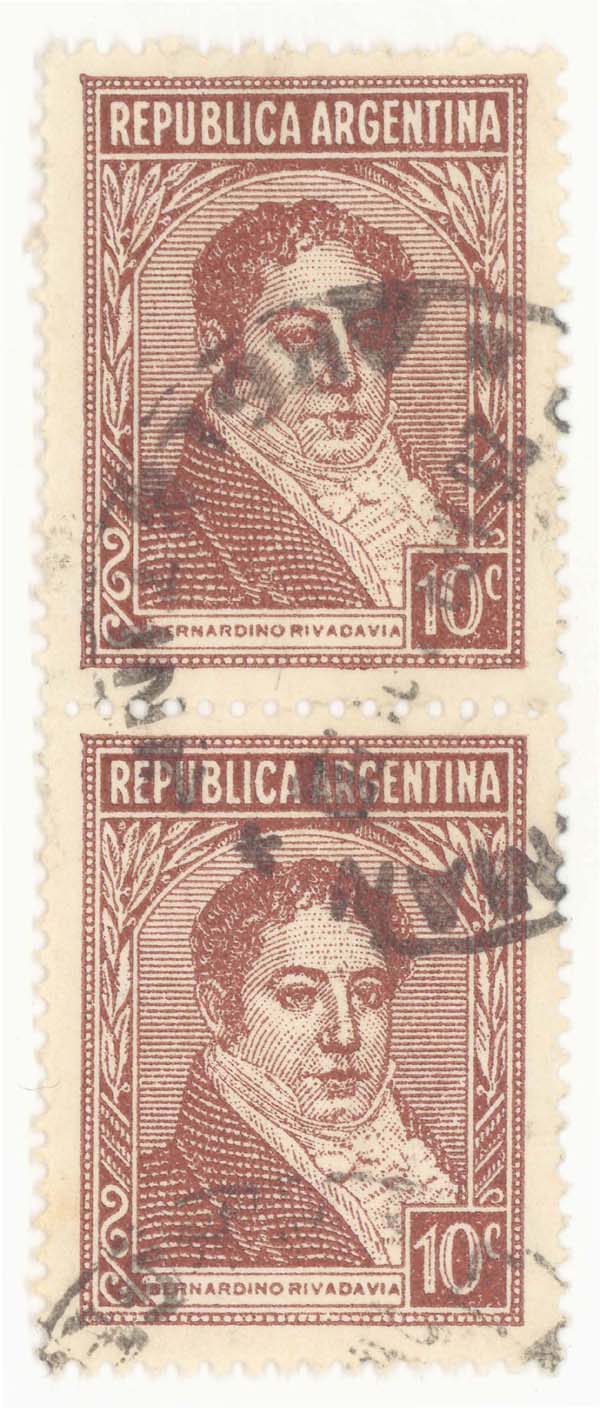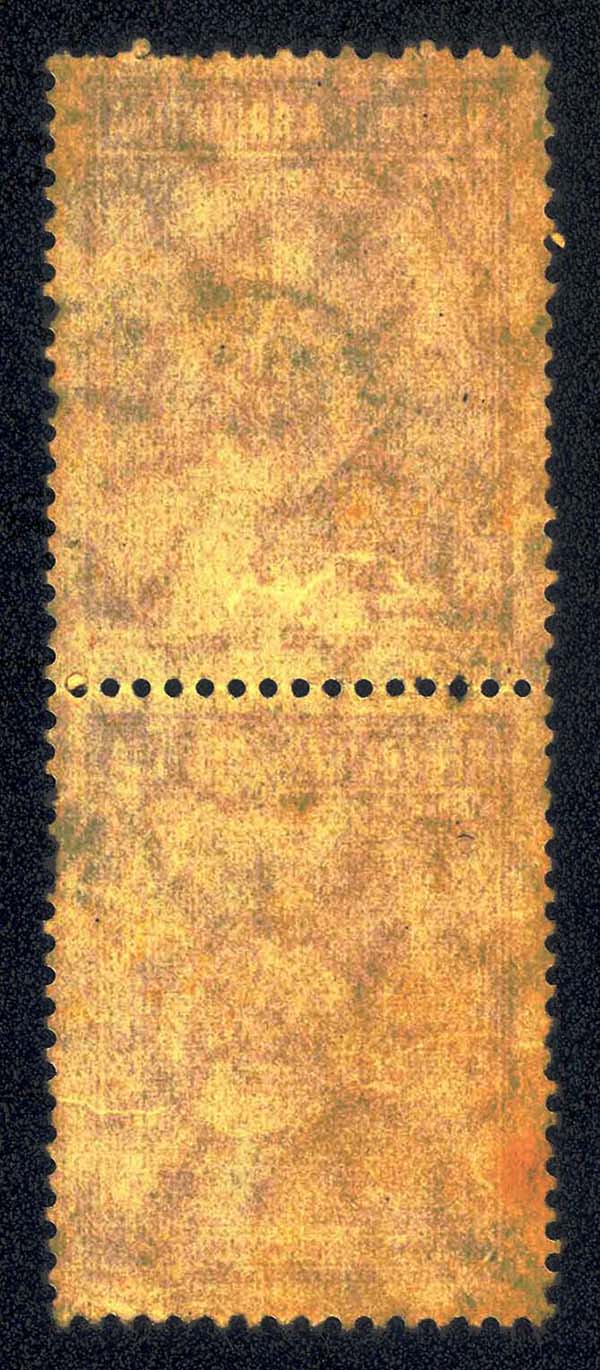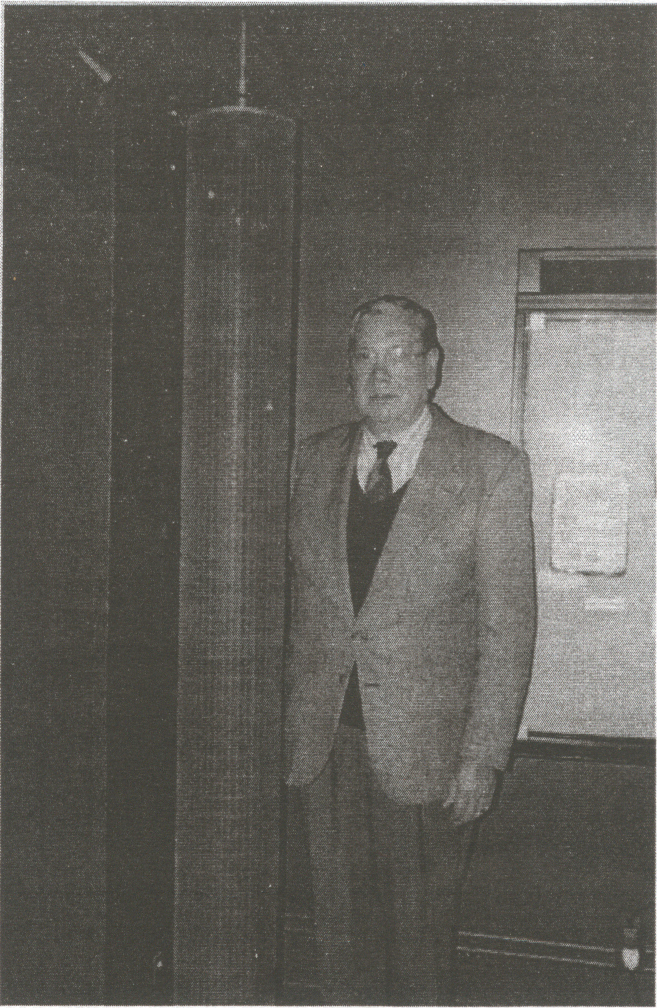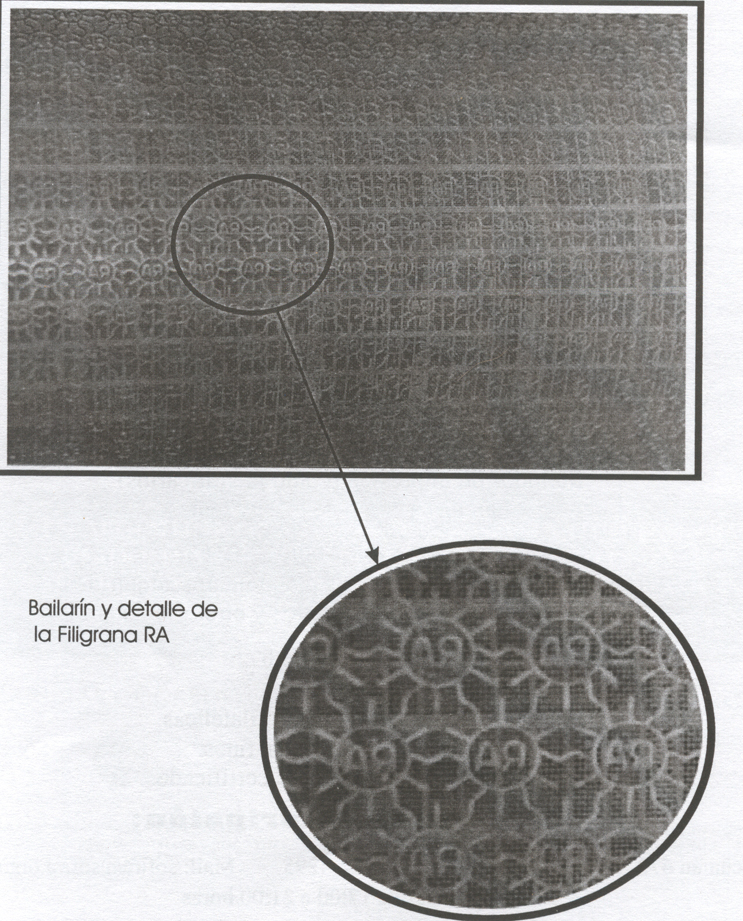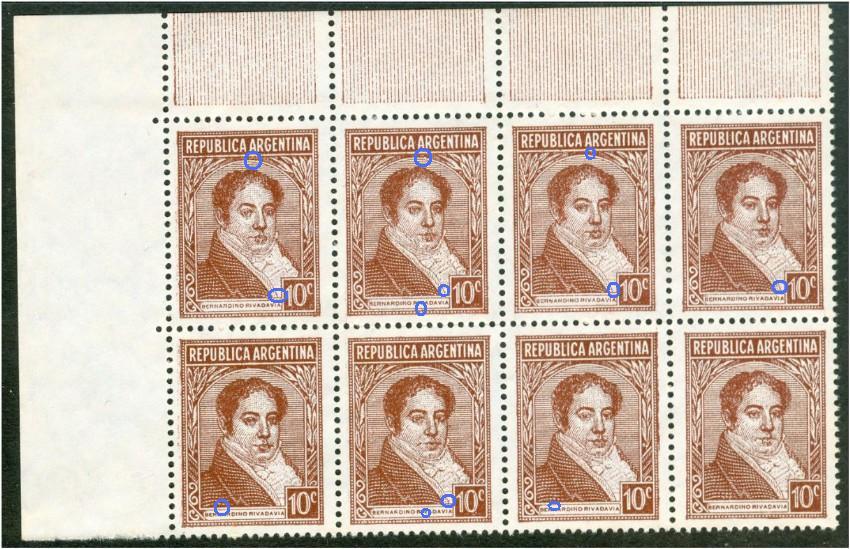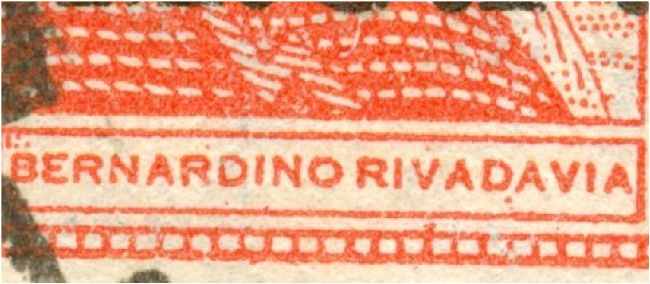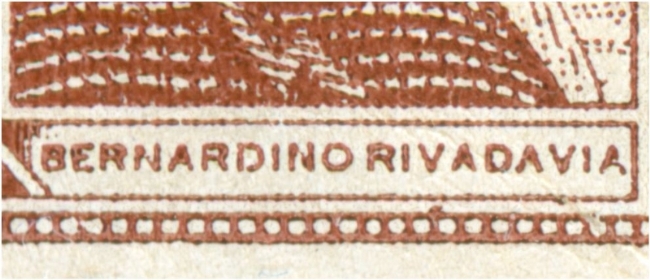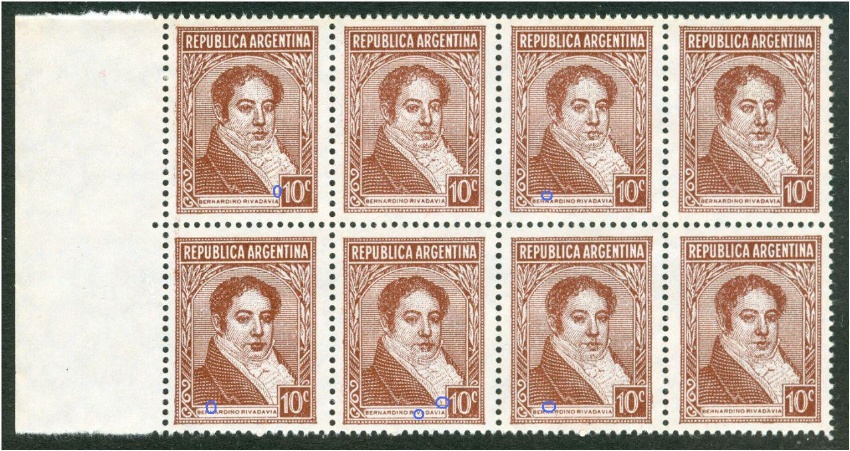Otin escribió:Rein,
De toda la informqción que ha estado enviando, saco en conclusion que Tenorio Casal estuvo doblemente equivocado:
a) el 10c Rivadavia castaño tipografiado fue emitido ANTES de noviembre de 1939; b) erró muy mal cuando dijo que primero
apareció en OFFSET. Si bien sus artículos ayudan en muchos aspectos en otros está completamente equivo9cado. Voy a tratar de sacar una fotocopia de un artículo referente al sello de 5c de la Revolución de 1943 ( Yv.425) donde se hace una tremenda confusión acerca de los tres papeles de ese sello.
.......................
En cuanto a los sellos tipografiados de 5 y 10 centavos. El Moreno, que tiene varias tiradas y no ha sido impreso en hojas
tengo pruebas ( las planchas completas o fragmentos) de que ha existido un grupo raíz (base Block) de 5 x 10 que ocupa la mitad izquierda de la plancha y se repite en la parte derecha. Esto se comprueba mirando el borde inferior de laq hoja cuando no tiene el sombreado completo. Se verá que el contorno de las irregularidades de la mitad izquierda se repiten en la derecha-
Una de las planchs del 10c Rivadvia rojo, tipo I, obviamente impresa en hojas, o sea en máquina plana´, muestra una
clara composición de 20 grupos de 5x2 sellos. Y en cuanto al 10c castaño de Rivadavia aquí ya conocíamos la existencia de los
dos tamaños.
Responderé in extenso tan pronto me sea posible. Saludos
Merlo
José,
Did you know about the 5c Moreno with empty forehead??? It is amazing to find out that it has NOT got the status it SHOULD have. On the same level as the 10c red! Type I of the 5c typography with empty forehead - type II with filled-in forehead!!!
The 5c with empty forehead has on the same sheet - at least 2 different base blocks of 5x2! I will display them all in due course here.
What makes you think there was a base block of 50??
Also the 10c red sheet-fed is most likely to have a base block of 5x2, but as to the reel-fed 10c red I am not so sure.
I have the impression that the reel-fed 5c type II may still have that base block for the Mate Lustroso printing but that the coated paper versions of both the 5c Moreno and the 10c Rivadavia have different settings of "types". Loose types that get multiplied in a more or less hierarchical way receiving tiny common features after which the types get pressed into papier maché haphazardly.
Of the 5c I know now 2 main types [type II and type III] and several subtypes of them, that can be found in at random positions in the sheets. Also of the 10c I have 2 main types [type II and type III] and several subtypes of them.
I probably should introduce or rather split up the 10c type II into type II-sheet-fed and type II-reel-fed as I have no way of distinguishing them other than by the size of the stamp. Or by the gauge of the perforation which as I have explained does NOT make sense - the difference is too small for a normal perforation gauge....
The tiny details that form the distinction between the various types are so "powerful" that they survive the havoc the Goebel is making of the "plates" while printing. The printing quality is a real disaster and had gotten worse after the introduction of coated paper. This disaster continued from 1949 till 1967!!! Incredible!!! Why on earth had the Casa de Moneda given up the use of matt, uncoated paper????
BTW, the tiny details - minute little dots - were considered important enough for philatelists in 1938 to have a type I and a type II for the 10c red!?!??!? Why had nobody bothered to continue????

